By Alex Trukan
Playing with two shadow strikers behind number 9 offers a lot of attacking possibilities. First of all, when going forwards, it offers an overload against two centre backs (opposition has to play three CB’s or one CDM dropping deeper to match up and track). When creating the attack on the opposition’s half, these two shadow strikers can play in between the units and drop in deeper to combine with centre midfielders. They can also make runs to create space for wingers or deep lying centre midfielders to exploit. This article will explore some of the ways two shadow strikers playing behind number 9 can be used.
Starting positions of these two players would be on the angles from number 9, positioning between opposition’s defence and midfield units. As the possession is developed in centre midfield, two shadow strikers would be looking to create gaps and receive the ball to play forwards. Clever movement off the ball is required. The key is to be aware what’s the distance to defenders and midfielders to make sure as they receive the ball, there is no one around to tackle and opposition has a problem who will press.
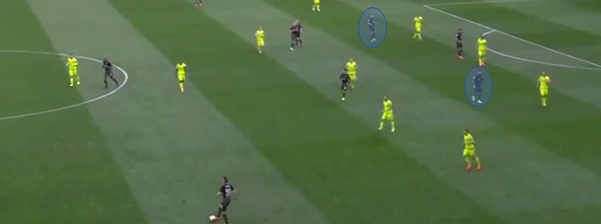
Typical movement that can be choosen by one of the shadow strikers is coming deeper to receive on the blind side of the defender. The timing is crucial – as one of the central midfielders receives the ball, striker should be looking to start his movement and receive facing forwards on the back foot. The other shadow striker and number 9 stay higher up the pitch to keep centre backs deep and create a threat in behind.
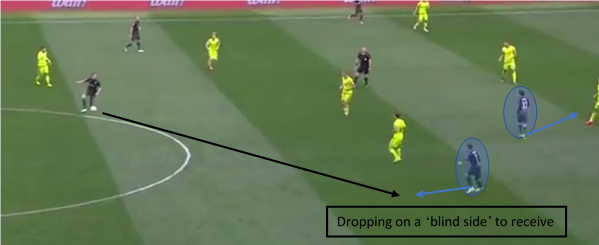
Another type of movement is when number 9 drops deeper to receive the ball and two shadow strikers make runs in behind. This creates opportunity not only to go in behind directly but also for number 9 to drive forwards with the ball and commit centre backs before passing the ball. This will be possible as two centre backs will often drop back to prevent balls in behind.
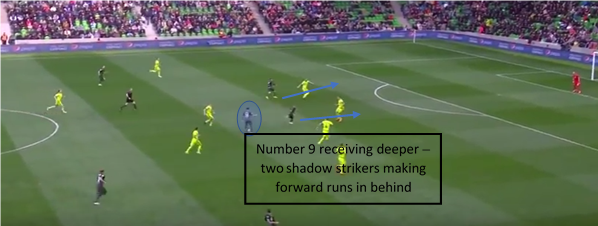
As one of the shadow strikers comes deeper to receive from wide areas, another centre midfielder can make a forward run to fill in those spaces. This simple combination allows to recycle the ball from wide areas and potentially play around opposition wide player. On the diagram below this would be left wing back who left space in behind him to be exploited by CM’s forward run.
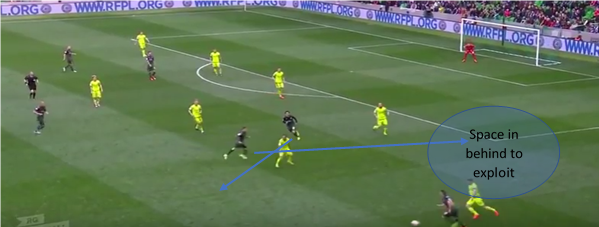
Shadow strikers making movement towards the ball might also move centre backs forwards and create more space in behind centrally. This can be then used by number 9 making diagonal run across the back line or CM making straight forward run from deeper positions.
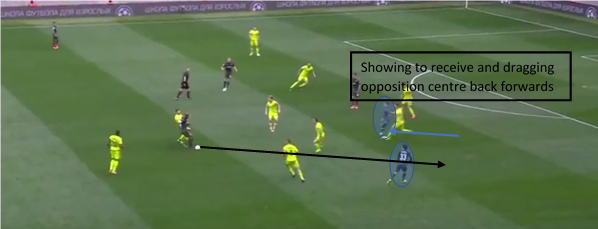
Having two players in half spaces behind the striker also offers more opportunities to finish from crosses as there will be more players in the box to support the striker. It will also free up the number 9 into more flexible role as there will always be a player to occupy opposition’s centre backs.
By Alex Trukan, Development Coach, Nottingham Forest - @AlexTrukan


